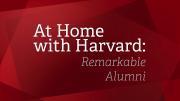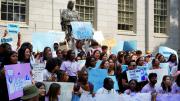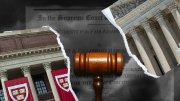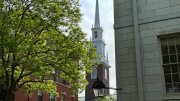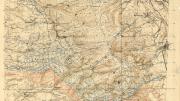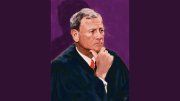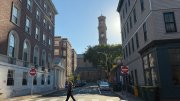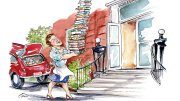This round-up is part of Harvard Magazine’s series “At Home with Harvard,” a guide to what to read, watch, listen to, and do while social distancing. Read the previous selections, featuring articles about climate change, racial justice, movies and theater, and more, here.
most ISSUEs of Harvard Magazine include a “Vita,” a brief portrait of someone of notable accomplishment, albeit often lesser-known to the public eye. This week, we’ve pulled some of our favorite Vitas featuring Harvardians (some of whom dropped out) who chose to pursue something far greater than themselves.
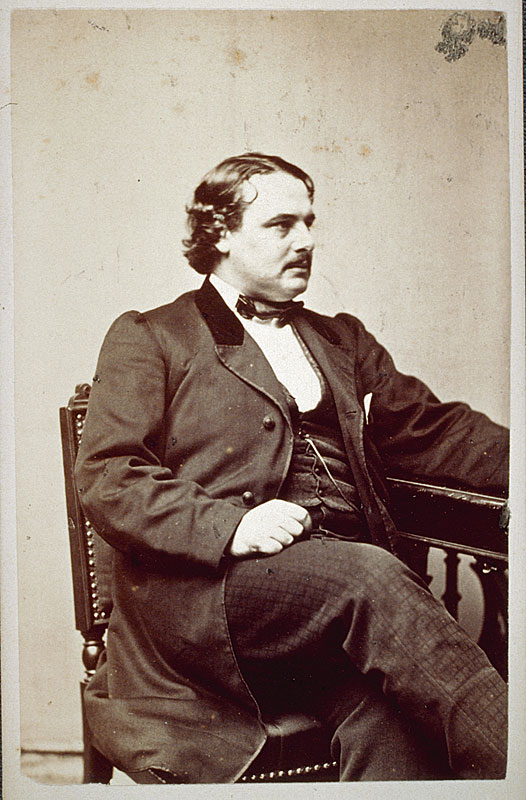
Albert Gallatin Browne Jr.
JUST A FEW YEARS AFTER GRADUATION, Albert Gallatin Browne Jr., A.B. 1853, found himself covering the Utah War (1857-1858) for the New York Tribune. During this conflict between U.S. armed forces and Mormon settlers, Browne provided news, gossip, and his own opinions to readers, creating a journalistic model for subsequent Civil War correspondents. He didn’t just cover the conflict; on New Year’s Day 1858, the Utah expedition commander offered him a mission of his own: a 4,000-mile round trip to Washington, D.C., to request reinforcements from President James Buchanan. He left four days later. After the war ended, Browne worked as a publisher, editor, banker, clubman, and leader of his Harvard class. I think you’ll enjoy this brief life.
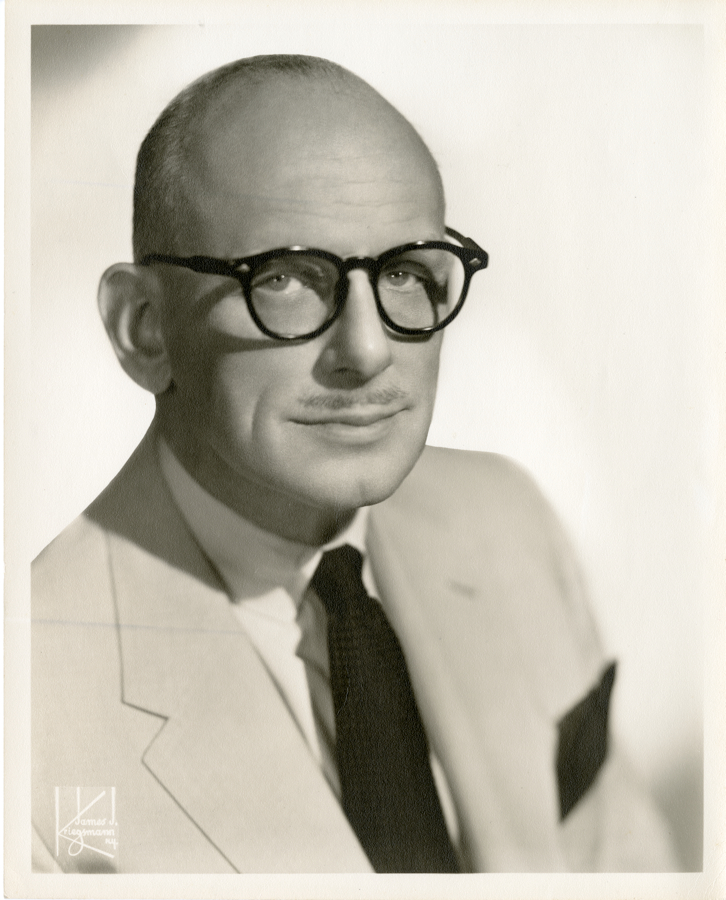
Lev Gleason
Photograph by James J. Kriegsmann/Courtesy of the author
As a publisher of comic books, Leverett Gleason, A.B. 1920, believed he had a duty to help stop fascism. In Daredevil Battles Hitler he released “a rare comic with an overtly political message.” After the Japanese attack on Pearl Harbor, Gleason enlisted in the military a second time, but returned after service to a changed landscape. As fears of domestic subversion grew, he and his business faced intense pressure. Refusing to provide names to the House Un-American Activities Committee, he was convicted of contempt of Congress. Later, as comics were scrutinized for their (unproven) harmful effects on children, the comic-book industry began to heavily self-censor, and Gleason’s weightier comics suffered. His departure from the industry was so sudden, some thought he had fled to Alaska or Cuba. I’d recommend this article to anyone, but especially those interested in comics and censorship.
~Jacob Sweet, Staff Writer/Editor
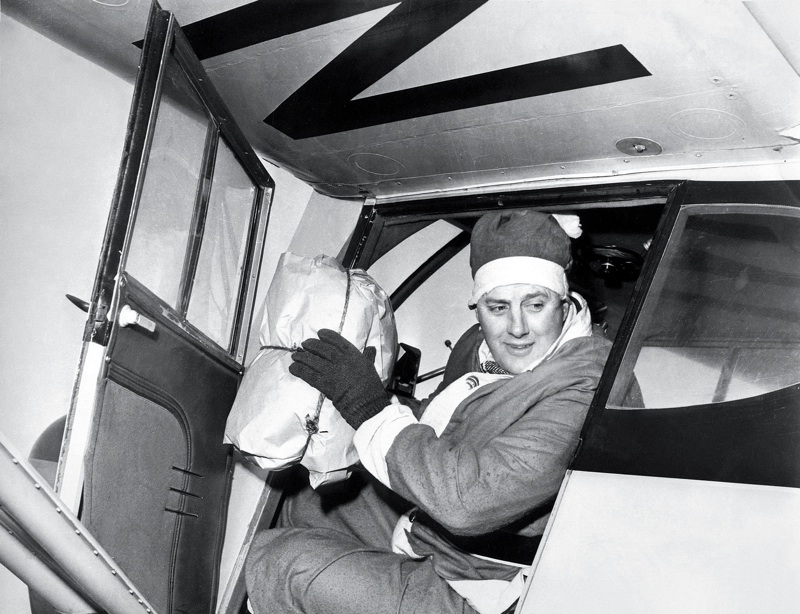
Dressed for duty
Photograph courtesy of Dolly Snow Bicknell
Edward Rowe Snowe, who entered Harvard at 27 after nine years traveling the world on sailing vessels and oil tankers, is best remembered as an author and storyteller who wrote principally about maritime New England. But to the children of lighthouse keepers up and down the Northeastern seaboard, he was one of the Flying Santas, dropping gifts from a plane (and once from a helicopter to deliver a particularly delicate doll to Cuttyhunk Island) at Christmas time. In this engaging life of a Winthrop, Massachusetts, history teacher, author Sarah Hunter Hoagland, Ed. M. ’86, describes how Snow fell into the role, and his daughter’s recollection of “piles of stuff around the house waiting to be bundled.”
~Jonathan Shaw, Managing Editor
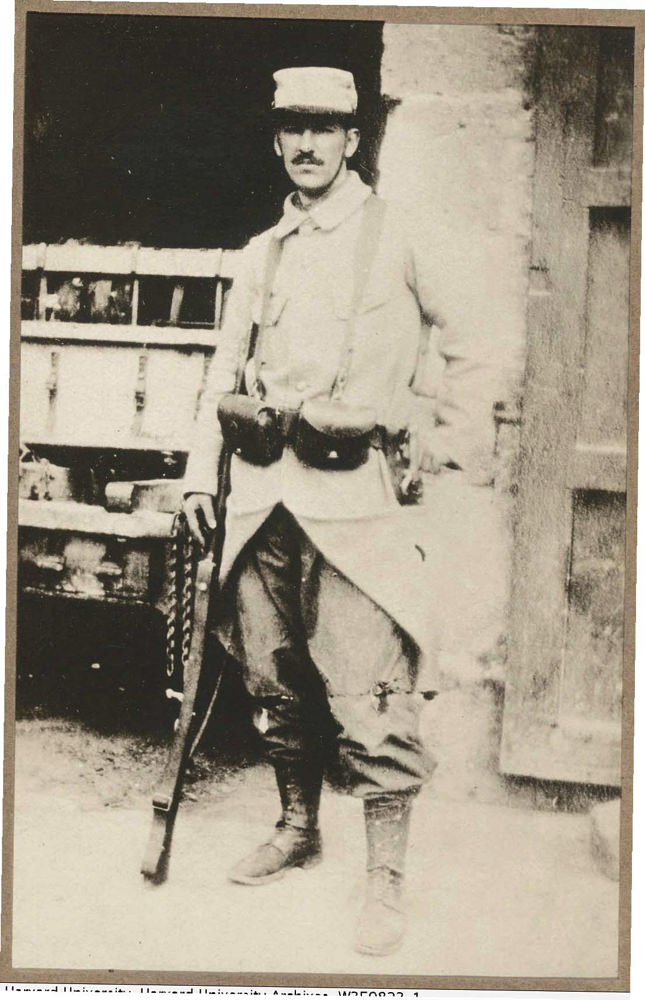
The poet as French legionnaire in 1916
Photograph: HUD 3567.219.2 no. 296, Harvard University Archives
For poet Alan Seeger, A.B. 1910, writes Dick Friedman, “as is often true for artists, death was (to be blunt) a good career move.” As a French Foreign Legionnaire before the United States had even entered World War I, Seeger composed “I Have a Rendezvous with Death,” the now-famous staple of American war poetry (which many readers may recognize from school) and favorite poem of President John F. Kennedy ’40. At Harvard, Seeger was deeply devoted to his poetry, and had been “intellectual to the exclusion of almost everything else,” as he put it in a letter to a friend from the war front. “I shut myself off completely from the life of the University. I felt no need of comradeship.” He wrote “Rendezvous” a few weeks before his death just after his twenty-eighth birthday in 1916; his poetry was subsequently widely published and celebrated, a record of a young life cut short—and of one man’s experience of a terrifying new age of modern warfare.
~Marina Bolotnikova, Associate Editor
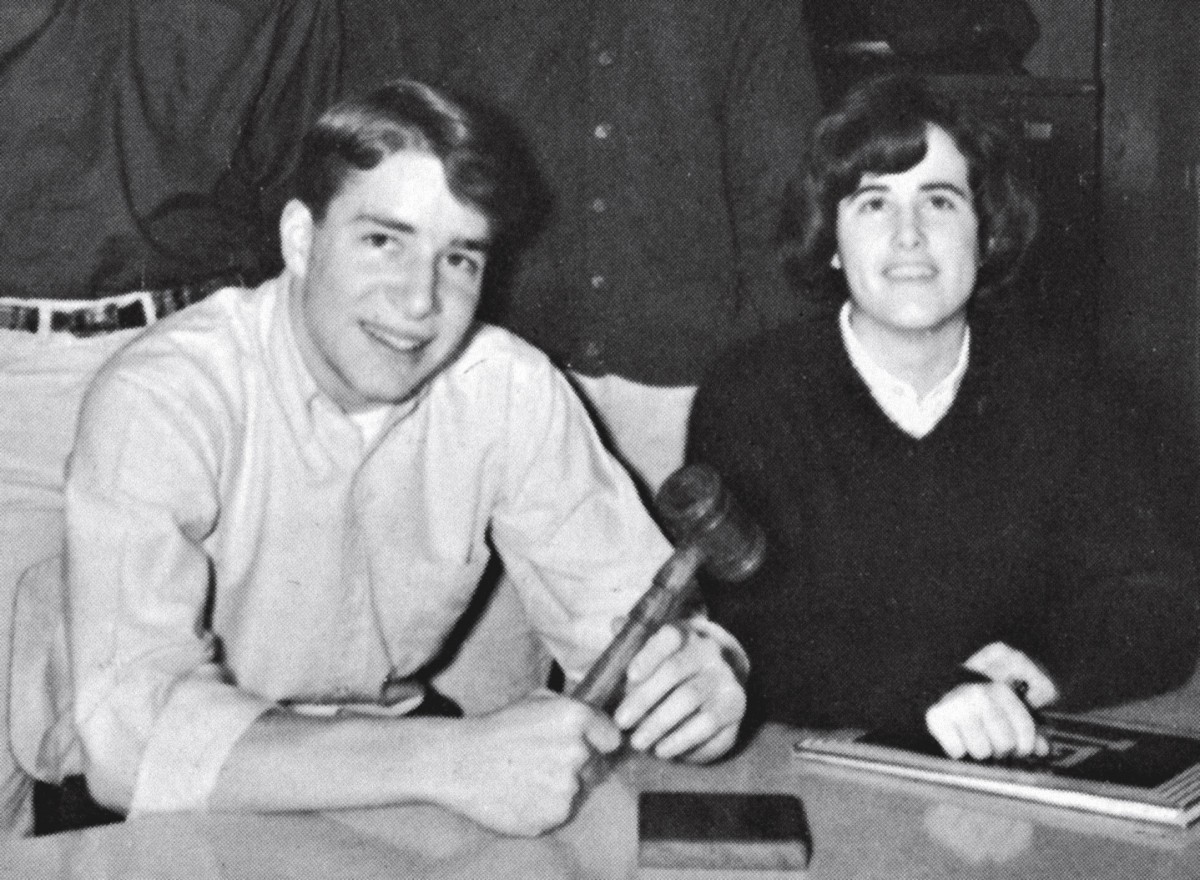
Carl Thorne-Thomsen in high school (with fellow student-council member Linda Jones Docherty)
Photograph from Lake Forest High School 1964 Yearbook/Courtesy of Linda Docherty
Carl Thorne-Thomsen ’68 possessed a sense of justice that led him to fight in a war he did not believe in. In this touching portrait of his too-short life, Bonnie Docherty writes that, during an era mainly remembered for antiwar protests and campus resistance, Thorne-Thomsen was driven by a different imperative. It was unjust, he believed, for him to remain sheltered at Harvard while poorer, less-educated young men went to war in Vietnam, and so the six-foot Midwesterner, an accomplished oarsman, withdrew during the spring of his junior year and was drafted soon afterward. He arrived in Vietnam in August 1967, and quickly made as many friends in the infantry as he had at Harvard. In both places, he was remembered as smart, sensitive, hard-working, and funny. When he died in a firefight after only a few months at war, the news traveled through Harvard “like a shock wave,” according to one source Docherty quotes. This is an affecting and illuminating reflection on the deeper meaning in the stark choice one young man made more than 50 years ago.
~Lydialyle Gibson, Associate Editor
More from “At Home with Harvard”
- Spring Blooms: Your guide to accessing the Arnold Arboretum as the seasons turn in Boston
- Harvard in the Movies: Our favorite stories about Harvardians on screen
- The Literary Life: Our best stories about the practice and study of literature
- Night at the Museum: Our coverage of Harvard’s rich museums and collections
- Nature Walks: Walking, running, and biking in Greater Boston’s green spaces, even while social distancing
- Supporting Local Businesses: Our extensive coverage of local restaurants and retailers, and how you can support them during this time of crisis
- Medical Breakthroughs: Our best stories going deep into the ideas and personalities that will shape the medical care of tomorrow
- Rewriting History: From race and colonization to genetics and paleohistory, our favorite stories about the people reshaping the study of history
- The Climate Crisis: Highlights from our wide-ranging coverage of the environment
- Crimson Sports Illustrated: With 2020 winter sports ending early and the spring collegiate season wiped out almost entirely, we look back at Crimson highlights from past years.
- The Real History of Women at Harvard: Stories covering the admission of women, the Harvard-Radcliffe merger, the rise of women in the faculty ranks, Harvard’s first woman president, and more
- The Undergraduate: Our favorite student essays on the undergraduate experience
- The Secret Lives of Animals: From zoology and evolutionary science to animal-rights law to the joys of local wildlife, a selection of our favorite animal stories
- Harvard on the Small Screen: Our coverage of the creators, writers, and actors in your favorite TV shows
- Extraordinary Lives: From our “Vita” section, extraordinary profiles of authors, artists, activists, and more
- Great Legal Minds: Our favorite stories on the minds reshaping American law
- Harvard History through a New Lens: Some of our most notable stories about obscure, dark, or surprising episodes in Harvard’s history
- Health and Fitness: Our extensive coverage of Harvard’s breakthough health and wellness research
- Pride Month: Stories of Harvard's LGBTQ life, research and history
- Inequality in America: Stories of America’s extreme inequality
- The Immigrant Experience: A selection of our writing on immigration, displacement, and the global refugee crisis
- Harvard in the World: Harvard Magazine’s coverage of the University’s expanding global reach
- Theater & Broadway: Harvardians take to the stage.
- American Democracy: Our coverage of the nation's ailing democracy
- Traveling for the Story: Stories from all over the world
- Library Treasures: Our coverage of Harvard’s libraries, more relevant than ever in an online world
- Women in Sports: Celebrating women athletes raising the bar in their sports
- Back to School: Our coverage of the freshman experience at Harvard
